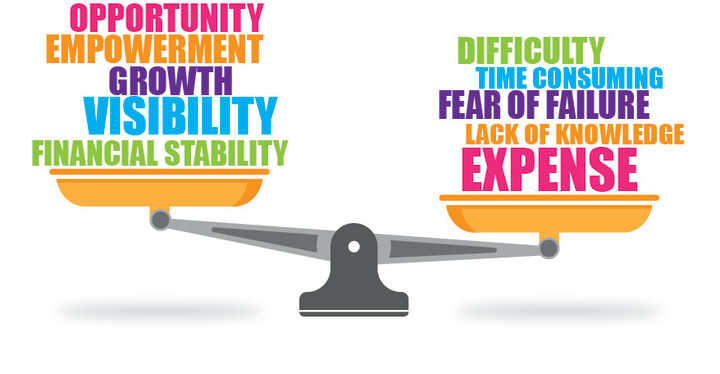Marketing Lessons From the Big Players
Don’t be the one they point the finger at.

Marketing is a strange beast. Few topics, other than perhaps politics and religion, divide opinion as much as marketing does in terms of what’s good or bad, right or wrong. Ok, perhaps Extinction Rebellion comes a close second, but marketing will never be all things to all people, and there’s a clear division in how business owners, in particular, feel about how or indeed whether they can really benefit from it.
On one side are those who believe marketing represents endless opportunities for massive exposure that will continually support the growth of their business. It empowers them to creatively and imaginatively reach a huge prospective audience (people who are not yet customers) via a seemingly ever-growing array of online and offline channels.

On the other side are those who see marketing as a burden because they don’t understand it, and it’s a potential drain on their time. They know they really should get around to doing something, but it will probably cost them a small fortune for little or no positive response anyway.
There’s no question marketing can be a challenge, and that challenge is mainly having to work out not only what to do that’ll be right for your business, but also how best to go about it — something even the really big players, with their endlessly deep pockets, get very wrong from time to time.
The art of the serious cock-up
At some point in each of our lives, we’ve said or written something we thought was funny or witty, possibly close to the mark but otherwise harmless, and then immediately realised it could be (or already has been) misconstrued or taken out of context and wanted the ground to swallow us whole.
If this occurs when talking to someone face-to-face, it may well be acutely embarrassing, but a red-faced apology will often allow you to recover from the situation. But when this happens with a disconnected audience, such as those reading a blog post, or worse, at the receiving end of a marketing campaign, just owning up to having made a mistake, or making an ill-considered comment, will rarely be enough.
The poet, Alexander Pope, famously said, “To Err is Human”, meaning it’s perfectly normal, perhaps even expected to have an occasional lapse in judgement. But when an entire marketing team takes their ‘great’ idea, talks it through, bounces it around, considers its potential impact, runs it by focus groups and yet still manages to get it so, so wrong, it’s difficult to comprehend how. But that’s precisely what happened in the following examples.

1994: Fiat – The Love Letter:

The creative brains in Fiat’s Spanish marketing department realised there existed a connection between the Fiat 500 and its prospective owner that would be far more than simply owning a car; it would be a relationship enveloped in love that mainly women would experience.
A ‘brilliant’ marketing campaign was created to promote the new Fiat 500 to an all-female audience, but Fiat knew they would never be able to target only women via TV, radio, billboards and newspapers. Instead, they wrote to the women. 50,000 of them, to be precise.
The letter, sent anonymously, said:
“Yesterday, we saw each other again. We met on the street, and I noticed how you glanced interestedly in my direction. I only need to be with you for a couple of minutes, and even if it doesn’t work out, I promise you won’t forget our little experience together.”
Whilst the clever, creative types celebrated their apparent genius, thousands of innocent women or their partners didn’t like it at all.
Some women’s partners thought they had a secret lover. Some women believed they were being stalked, and one woman even cancelled her weekend plans, asking family members to begin a private investigation.
Four days later, a second letter arrived that explained the first and was accompanied by a brochure for the Fiat 500 and an invitation to visit their nearest car dealership.
Even though sales overall remained steady, the negative publicity was damning. A group of women later successfully sued Fiat.

2015: Bud Light – “Up for Whatever”

In an attempt to get younger American consumers more engaged with the brand, Anheuser-Busch, makers of the popular Bud Light bottled beer, launched the “Up for Whatever” marketing campaign.
However, their timing really couldn’t have been any worse, launching the campaign at a time when colleges all over the US were already dealing with high profile cases of binge drinking and sexual assault, yet they pushed ahead regardless.
If the phrase “Up for Whatever” is already making you feel a little twitchy, imagine how it went down when accompanied by a slogan printed on the bottle label that said the beer was, “Perfect for removing ‘no’ from your vocabulary for the night.”
It was carnage, with many accusations that the slogan led directly to further sexual assaults. Anheuser-Busch quickly pulled the label, leaving Vice President, Alexander Lambrecht, to explain, “It’s clear that this particular message missed the mark, and we regret it. We would never condone disrespectful or irresponsible behaviour.”
Unfortunately, the statement didn’t go down well, and Anheuser-Busch was further publicly vilified after issuing several press releases that were said to be nothing more than “…a deluge of ‘but you’re misunderstanding our intention’…”
And if that wasn’t bad enough (yes, it gets worse), Anheuser-Busch’s subsequent St. Patrick’s Day tweet appeared to actually encourage sexual harassment, saying, “On #StPatricksDay, you can pinch people who don’t wear green. You can also pinch people who aren’t #UpForWhatever.”
Anheuser-Busch quickly deleted the post.
Interestingly, not everyone agreed the campaign was flawed (right there is the joy and pain of marketing), but it’s hard to recover from that level of reputational damage, and it requires ten times the effort to rebuild trust in the future.
Trust is like a vase; once it’s broken, though you can fix it, the vase will never be the same again.
– Walter Anderson

2019: Gillette – “We Believe in the Best in Men”

Between 1989 and 2019, Gillette’s slogan was “The Best A Man Can Get”, and whilst it had an obvious double meaning, its primary message was that men would not able to find any better razor than a Gillette razor. Nobody was offended by that; it’s just good, old-fashioned marketing.
However, in January 2019, Gillette launched a campaign that would change everything, and in spectacular fashion too.
The “We Believe in the Best in Men” put them in front of a global audience that stretched way beyond their usual customer base too.
Gillette genuinely believed the timing was right to address the serious and now very public-aware issues of bullying, sexual harassment, and toxic masculinity.
As succinctly explained in Nar Poghos’ excellent 2019 [Medium] article, entitled ‘Why Gillette’s New Ad Is Toxic’; “People are offended by the Gillette advert because they believe that it is blaming men for something men are not entirely responsible for. Bullying, harassment, aggressive behaviour are things women can do, too, yet campaigns highlighting the ways women can be bad are nowhere to be found.”
Incredibly, and despite having the might of marketing behemoth Procter and Gamble behind them, Gillette still managed to get this messaging wrong on many levels.
Forbes’ Senior Contributor, Charles Taylor, observed that “Reaction to ‘We Believe in the Best in Men’ has been overwhelmingly negative, with comments on its own Youtube channel running negative by an astonishing ten to one margin.”
Ten to one against is pretty damning, but if the audience was 100 million people (which it easily could be with a global brand), then 9 million people not only agreed and identified with the campaign message, but it probably made a difference to their lives, and almost certainly to the lives of those around them.
Agree or disagree with the campaign, controversy isn’t always a good thing, despite what Oscar Wilde believed when he famously said, “The only thing worse than being talked about is not being talked about”.

The cost of getting it wrong
The true cost to a company following a catastrophic marketing failure is not always measured in bankable currency.
Ultimately, it may lead to that, or perhaps the lack of it, but initially, it’s about reputational damage — and reputation is as vital to uphold internally with staff and stakeholders (you need them to keep trusting you) as it is externally with customers (you need them to keep paying you).
The above examples demonstrate how a well-intentioned marketing message can take you by surprise and quickly go badly wrong, and the bigger the audience, the bigger the problem.
It would be reasonable to assume that Fiat, Anheuser-Busch and Gillette may have knowingly pushed the boundaries a little. They certainly wouldn’t be the first retail giant to create a potentially controversial ad campaign deliberately. And, if their campaigns hadn’t offended anyone, the marketing teams would have been hailed as heroes.
Highlighting them here is not meant to dissuade you from diving head-first into launching your own fun and exciting marketing campaigns. Instead, they should help you understand how important it is to focus on crafting the right message for a particular audience and being clear about how that message might be received, especially by a wider, diverse audience.

What does this all mean for a micro, small or medium-sized business?
You don’t need a marketing budget the size of England’s GDP to make a blunder that could ruin your business. Small budgets work just as well.
Global audiences are significantly more challenging mainly because of cultural differences, and something as simple as a ‘thumbs up’, seen as giving approval or showing happiness in western society, is seen as giving the middle finger in Greece, Iran, Russia, Sardinia and parts of West Africa.
But it’s not all bad news and you needn’t be terrified. Below are some talking/thinking points for you and your creative teams to consider:
> There will be challenges
Be under no illusion that it won’t be challenging, and the larger your audience, the greater the risk exists to unintentionally offend one group of people while positively delighting others.
Run the concept by multiple test audiences (focus groups) to gauge their response before committing to anything. You’ll know if it feels right, and you’ll need to be honest with yourself if it feels wrong, so don’t let your ego or anyone else’s bully you into believing it’s good to go just because you want it to be.
> Know your audience
Be very careful with your messaging, especially if you think it’s funny, controversial or provocative — they’re all very dangerous territory to be playing in.
If you and/or your creative team come up with a seemingly fantastic idea, don’t simply run with it because everyone involved in the brainstorming session thinks it’s a hoot.
With #metoo, woke, racial equality and everything else that attempts to balance society and make us better people, it’s best to take professional advice if the nature of your business takes you into these territories or if you plan to launch a campaign that will.
> Never be worried about over-thinking the context of your campaigns
It’s hard enough coming up with unique ideas in the first place, and when you do hit on one, it feels natural to want to run with it. However, if the message is more complex than a 20% discount every third Tuesday, perhaps now you’ll appreciate how important it is to think it through, over and over again.
> Tell a story people can relate to
It doesn’t matter if you’re a car manufacturer or a cheese maker; you’ll have stories about your product or service that others will relate to. Remember the quote by the late, great Angelou Maya: “…people will forget what you said, people will forget what you did, but people will never forget how you made them feel.”
Stories are a powerful way to convey a message. It’s why the likes of John Lewis, Marks and Spencer, and now most retail giants spend a fortune on their Christmas TV ad campaigns. Everyone loves a good story.
> Make sure there’s real value in your offering
Renowned SEO strategist, Wil Reynolds, explained how his business growth went off the chart once he began focusing on what his customers valued instead of what he wanted to give them. “…everything starts with the value you’re providing.”
> Be the genuine solution to a real problem
Not every product or service is a mind-blowing solution to a problem, and even many of those that are solutions are not game-changers. Perhaps the first PC keyboard wrist rest was a game-changer, or the first in-car magnetic mobile phone holder was too, but now there are so many variations on a theme; the choice is about style, colour or features.
But that’s not to say you can’t dress it up as a great solution, even if it’s been done a thousand times before. That certainly doesn’t stop washing powder manufacturers extolling the virtues of its ‘new, whiter than white’ features!
> Get out of the way
Don’t hinder the creativity within your organisation or that of your outsourced agency, but do make sure they fully understand what you do, who you are and what your customers need. It’s so easy to get that wrong by not being in control, but you don’t want to be a barrier either.

About the Creator
Clive Wilson
I write with an inquiring mind about marketing, business and what life can teach us about life, and I take very little at face value.
You can find more about me at www.clivewilson.com






Comments
There are no comments for this story
Be the first to respond and start the conversation.